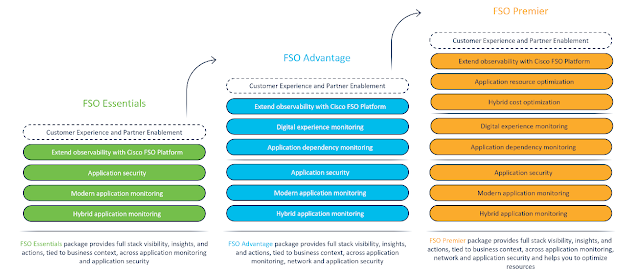Organizations are increasingly adopting software-defined wide area networks (SD-WAN) to enhance network performance, reduce costs, and improve overall connectivity.
Using artificial intelligence (AI) and machine learning (ML) for IT operations (AIOps), Cisco SD-WAN enhances and simplifies network management by using predictive analytics based on AI and ML techniques. The result is a proactive tool to address potential network issues before they degrade network and application performance.
Features desired by networks operators for such proactive actions include:
- Predictive Path Recommendations (PPR), which suggests preferred paths for various application groups at each site within an overlay based on long-term modeling of path quality.
- Bandwidth forecast for capacity planning, giving operators insights into possible future network usage based on extensive past usage patterns.
- Anomaly detection for network KPIs (tunnel loss, latency, jitter), application usage patterns with individual sites, and user application usage profile.
- Application modeling to help network operators better understand the impact of rolling out new applications in the overlay so they can implement the correct policies for best performance and minimal impact.
We discussed PPR and demonstrated how it gives operators the best performance for applications on their fabric. In today’s post we will delve into Bandwidth Forecast. To fully leverage the benefits of SD-WAN, effective capacity planning is crucial to help ensure optimal network performance, less downtime, improved cost control, more seamless operations, and a superior user experience.
The Bandwidth Forecast feature takes a comprehensive approach to provide accurate predictions of circuit usage, providing visibility into which circuits are likely to breach the capacity threshold based on the predicted usage. This helps network operators monitor usage trends on the circuits and provides capacity planning for the overlay.
The forecasting is primarily based on the RX/TX bandwidth information of circuits in the WAN fabric. To ensure insights use underlying long-term trends, the circuit usage data is aggregated as daily data points while tracking daily Min/Max ranges. Aggregated data over extended periods is used to generate a forecast for up to three months in the future.
Various other features within this data set can be further leveraged to enhance forecast accuracy. These include:
- Type of circuit (e.g., MPLS, private internet, LTE)
- Type of applications using the circuit (i.e., top 10 applications and their respective volume)
- Number of users at the site served by the circuit
- Regional holiday list and bandwidth information features
To achieve the best forecast possible, a combination of common predictors and those based on deep learning techniques are used to generate more reliable and robust forecasts.
Pre-processing of interface statistics for training and inference pipeline (Click image to enlarge)
Forecast quality is continuously monitored for accuracy. If any data or model drift or deviation from expected results is observed, retraining of the model is triggered based on updated data sets to improve model accuracy. Furthermore, forecasts are assessed for long-term overestimation or underestimation, ensuring that it faithfully predicts the bandwidth to assist network operators in capacity planning and decision-making process.
The Bandwidth Forecast feature in Cisco SD-WAN Analytics helps give network operators a better understanding of the following:
- Growth Trends: By analyzing historical data presented side by side with the forecast, organizations can identify patterns and anticipate future bandwidth demands. This empowers them to plan for anticipated growth without disruptions.
- Seasonality: Long-term visibility into seasonality of usage over the historical period over which the training data set is derived from. The daily, weekly, and monthly seasonality is also factored in while making the forecast and the pattern continues into the forecasted data points.
- Surge: Although visibility is provided into historical surge usage in the overlay so network operators can correlate it to global events (e.g., Black Friday) or internal events (e.g., company all-hands video stream), the model is effective in minimizing the impact of such data points while making long-term forecasts.
- Min/Max Band: The daily data points for forecast has three components, Min, Mean, and Max. The forecast is presented with emphasis on the daily mean value while still showing a Min/Max Band so that the network operators can get insights into usage spikes within the day.
- Model/Forecast Performance: Historical usage data is presented along with the past forecast data points for a quick visual comparison of how the forecast performed against actual recorded values in the past.
User interface
The Bandwidth Forecast feature can be activated for a specific overlay in the Catalyst SD-WAN Analytics Dashboard. This appears under the “Predictive Network” tab. Users can choose the circuits in the overlay for the forecast generation.
A table of circuits with all related metrics such as site or provider info, RX/TX bandwidth, and total usage is displayed, helping users select the circuits for which they want to visualize Bandwidth Forecast details. The minimum data set requirement for forecasts to be generated is 12 weeks of historical daily data points for each circuit.
The workflow is subject to the following:
- The table shows only circuits configured on physical interfaces and this will exclude any circuits configured on logical interfaces (e.g., sub-interfaces, loopback, dialer-group).
- Default sorting is based on descending order of RX/TX bandwidth, which helps bubble most heavily used circuits to the top of the table. The chart display is used to show the forecast for the Top Circuit.
- Users can select any other circuit by clicking on the checkbox.
- Users can search and sort as they wish to isolate specific circuits of interest.
Table of circuits and their metrics [Click image to enlarge]
Bandwidth Forecast for selected circuit showing actual and predicted (dotted) values [Click image to enlarge]
Metrics
Accurate bandwidth forecasting is critical in capacity planning. One key metric is the accuracy of the forecasted bandwidth requirements. A successful forecast should closely align with the actual capacity goals for your business. The current solution computes mean absolute percentage error (MAPE) and mean absolute scaled error (MASE) scores in addition to tracking percentiles. Any of these can be used as the optimization target for the predictors used. The choice of target metrics for the predictors can be specified as per the needs for a specific overlay or use case.
By accurately predicting bandwidth requirements, organizations can optimize traffic routing, provision appropriate link capacities, manage QoS effectively, plan for scalability, and ensure adherence to SLAs. This proactive approach enables businesses to leverage the full potential of SD-WAN, delivering enhanced network performance, improved user experiences, and the ability to adapt to changing business needs. As organizations embrace the digital transformation journey, incorporating bandwidth forecast in SD-WAN capacity planning becomes a key strategy for success.
Source: cisco.com


















